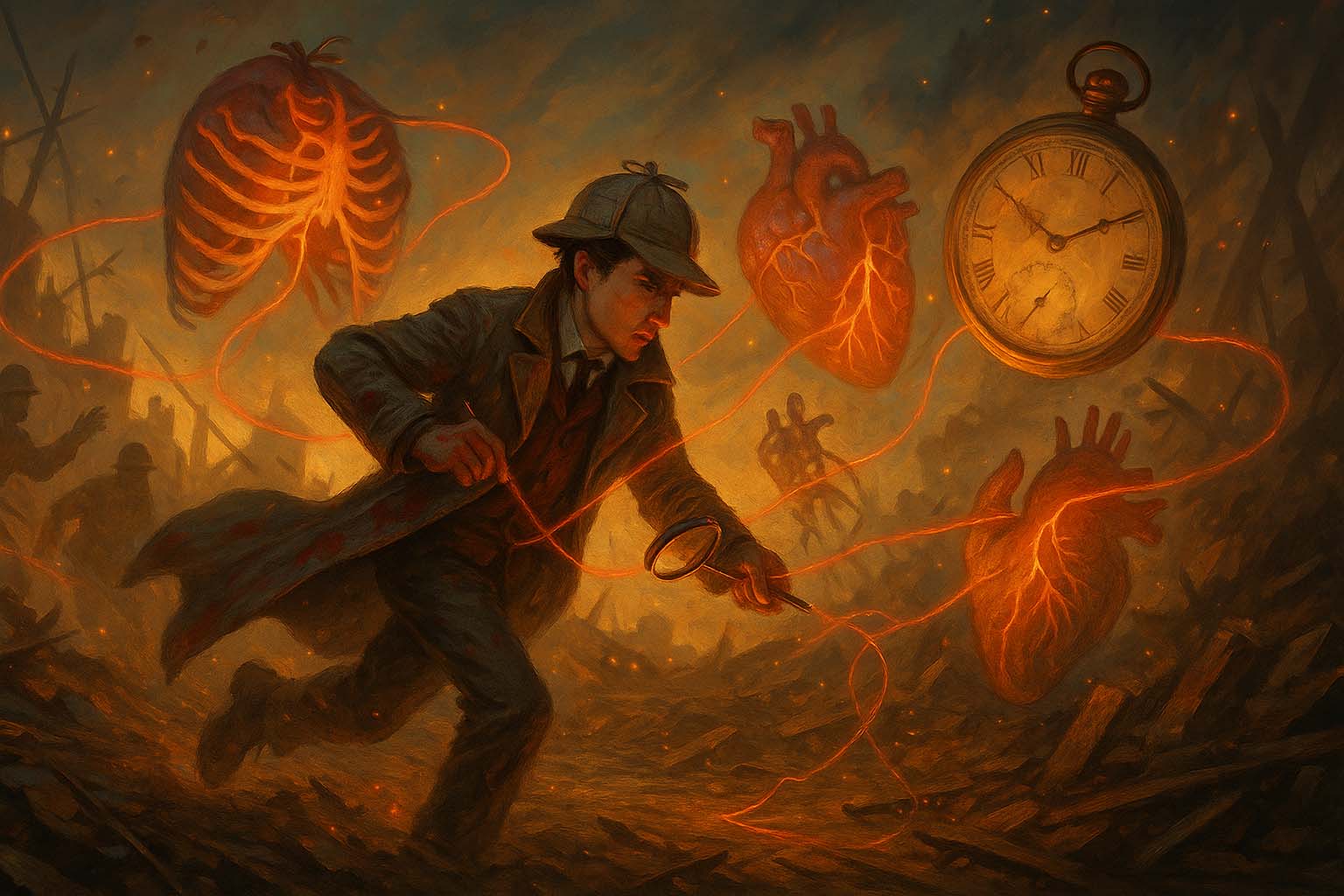
Trauma Surgery
- Posted by admin
- Categories Reconstructive, Transplant & Trauma Surgery
- Date May 24, 2025
- Comments 0 comment
The Crisis Detective’s Domain – Cracking the Cases of Blunt Force, Bleeding Out, and Beating the Clock
1. Introduction: The Scene of the Specialty
Step into the shoes of a Trauma Surgery sleuth.
This is the frontline of surgical response—the flashpoint where chaos arrives without warning. Trauma surgeons are battlefield thinkers in civilian hospitals, trained to make life-or-death decisions in seconds. Their cases arrive fast, loud, and often unknown: multiple injuries, crashing vitals, bleeding with no time for backstory. Welcome to a world where a quiet abdomen may still hide danger, and where instinct, training, and team synchrony are the difference between life and loss.
2. Key Mysteries They Solve (Common Conditions)
These detectives specialise in solving cases involving:
- Blunt and Penetrating Trauma – road accidents, falls, stabbings, gunshots.
- Abdominal and Thoracic Injuries – bleeding or perforation from solid or hollow organs.
- Polytrauma and Shock – head, chest, pelvis, and limb injuries in complex combinations.
- Undifferentiated Collapse – the unconscious patient with no clear history and everything at stake.
Each case is a race against time—triage, stabilize, operate, reassess—all while staying three steps ahead of deterioration.
3. Their Trusted Tools & Techniques
Every detective has their kit—and in Trauma Surgery, tools may include:
- FAST (Focused Assessment with Sonography for Trauma) – the rapid window into bleeding compartments.
- Damage Control Surgery – staged operations prioritising survival over perfection.
- Laparotomy & Thoracotomy – wide access in the abdomen or chest for urgent repair.
- Massive Transfusion Protocols & Airway Management – keeping the body alive while the diagnosis unfolds.
This is surgery done on the edge—fast, focused, and often without a second chance.
4. The Charms of This Field: Why It Captivates the Curious
- Adrenaline and Impact: No specialty delivers such raw immediacy of purpose.
- Team Leadership Under Fire: Guide anaesthetics, ICU, ortho, and nursing in real time.
- Versatile Skillset: Operate across body systems—abdomen, chest, vasculature, limbs.
- Purpose Beyond Protocol: No routine. Every case is a new story with no script.
This is surgery where the decisions are fast, the stakes are ultimate, and the wins are unforgettable.
5. Challenges: The Toughest Cases They Face
- Emotional Toll – Young patients, preventable injuries, and sudden deaths weigh heavily.
- Uncertainty & Incompleteness – Often operating with limited history or diagnostics.
- High Burnout Risk – The pace, pressure, and unpredictability can overwhelm.
- Systemic Barriers – Trauma care requires coordinated teams, resources, and rapid escalation capacity.
But the seasoned trauma surgeon knows: you train for years so that when minutes matter, you’re ready.
6. Famous Cases and Hallmark Clues
- The “Classic Presentation” – Hypotension after motor vehicle crash: splenic or pelvic bleed until proven otherwise.
- The “Zebra” – Chest trauma with hypotension and no external bleeding: cardiac tamponade.
- The “Aha Moment” – Tachycardia and falling BP in a patient with normal imaging: hidden retroperitoneal bleed.
7. Your Training Trail: How to Join the Investigation
To become a Trauma Surgery detective:
- Begin with general surgery and acute care exposure.
- Master ATLS (Advanced Trauma Life Support) principles—airway, breathing, circulation, disability, exposure.
- Train in high-volume trauma centres—experience is everything.
- Hone team leadership, mental stamina, and tactical calm.
Whether clamping a splenic hilum or performing an emergency thoracotomy in resus, your hands move before hesitation can enter.
8. Final Words: The Signature of the Trauma Surgery Detective
Trauma surgeons are the warriors of the operating theatre.
They step into chaos, find the pattern in the noise, and act with fearless clarity.
They don’t wait for perfect information—they work with what’s in front of them, for the sake of what comes next.
So if you’re drawn to pace, precision, and purpose under pressure—then this is your calling to answer when the red phone rings.



